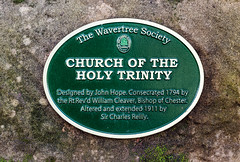Charles Herbert Reilly
Charles Herbert Reilly
(1874-1948)
Commemorated on 2 plaques
Sir Charles Herbert Reilly 1874-1948 Professor of Architecture lived here 1922-1925
171 Chatham Street, Liverpool, United Kingdom where they lived
Church Of The Holy Trinity. Designed by John Hope. Consecrated 1794 by the Rt Rev'd William Cleaver, Bishop of Chester. Altered and extended 1911 by Sir Charles Reilly.
Church of the Holy Trinity, Church Road, Liverpool, United Kingdom where they designed (1911)

.jpg?width=250)
